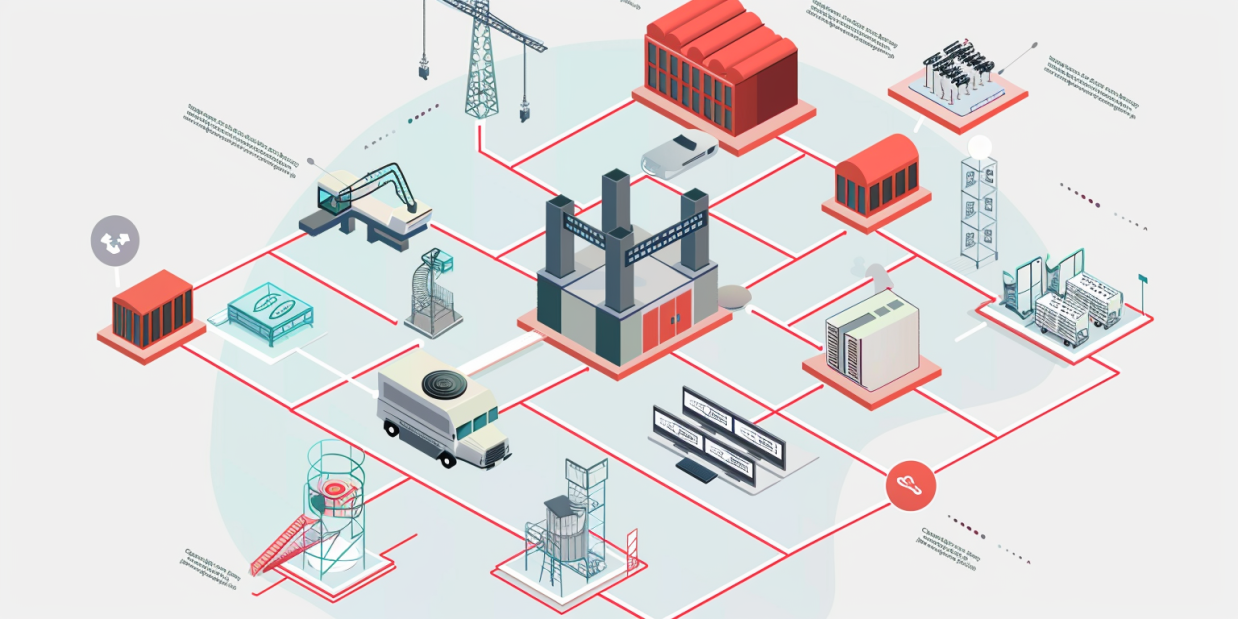In the dynamic field of systems engineering, the blueprint for success often lies in the foundational stages of system design and development. At the heart of this preliminary phase is the Concept of Operations (CONOPS), a critical document that articulates the envisioned operational scenarios of a proposed system. CONOPS serves as a narrative, bridging the gap between abstract ideas and practical system requirements by outlining how the system will operate within its intended environment from the perspective of the end user. Its significance extends beyond mere documentation; it acts as a linchpin that aligns the expectations and requirements of all stakeholders involved in the project.
The journey of CONOPS from a conceptual idea to a standardized process is marked by notable milestones, starting with the IEEE 1362-1998, the first standard to formalize its structure. This standard laid the groundwork for what would evolve into a more comprehensive framework, the ISO/IEC/IEEE 15288:2015, which currently governs systems and software engineering life cycle processes. This evolution reflects the growing recognition of CONOPS as an indispensable tool in the systems engineering toolkit, emphasizing its role in ensuring clarity, coherence, and alignment throughout the system development lifecycle.
As systems engineering ventures into increasingly complex and multi-faceted domains—ranging from military operations to governmental services—the CONOPS document stands as a testament to the power of clear communication, strategic planning, and stakeholder collaboration. This article aims to decipher the intricacies of CONOPS for systems engineers, offering insights into its components, development process, and its vital role in translating operational needs and goals into tangible system requirements. Through this exploration, we endeavor to illuminate the path for systems engineers, enabling them to harness the full potential of CONOPS in steering their projects toward success.
Table of Contents
The Essence of CONOPS
At its core, the Concept of Operations (CONOPS) is more than just a document; it’s a strategic narrative that guides the entire lifecycle of system development and deployment. Its essence lies in its ability to articulate the operational needs and desired outcomes of a system from the viewpoint of the end-user or stakeholder. This clarity is paramount, as it essentially shapes the direction of system requirements, design, and operational strategies, ensuring that the final product aligns with the overarching mission and goals.
Bridging Vision with Reality
CONOPS serves as a bridge between the conceptual vision of what a system is intended to achieve and the practical realities of how it will operate within its designated environment. By detailing the operational scenarios, user interactions, and the roles and responsibilities of all parties involved, CONOPS ensures that the system’s conceptualization is grounded in achievable, real-world application. This bridge not only facilitates a better understanding among stakeholders but also ensures that the system’s designers and engineers have a clear roadmap to follow.
Aligning Stakeholder Expectations
One of the primary purposes of a CONOPS document is to align the expectations of all stakeholders involved in the project. Whether it’s the end-users, project managers, developers, investors, or regulatory bodies, CONOPS communicates the proposed system’s capabilities, limitations, and operational scenarios in a language that is accessible to all. This alignment is crucial for garnering support, ensuring stakeholder satisfaction, and mitigating potential conflicts or misunderstandings that could arise later in the development process.
Foundation for System Requirements and Design
CONOPS lays the groundwork for defining system requirements and guiding the design process. By presenting a clear picture of the desired operational outcomes and scenarios, it enables systems engineers to translate these operational needs into technical specifications and requirements. This direct correlation between the operational vision and the technical blueprint ensures that the system is designed with its ultimate purpose and user needs in mind, fostering a user-centered approach to system development.
Facilitating Decision Making and Planning
The development of a CONOPS document is an exercise in strategic planning and decision-making. It prompts stakeholders and project teams to consider critical questions about the system’s purpose, its environment, and how it will be used, maintained, and evolved over time. These considerations are essential for identifying potential challenges, opportunities, and constraints early in the project lifecycle, enabling more informed decision-making and efficient resource allocation.
The essence of CONOPS lies in its ability to vividly illustrate how a proposed system will function within its intended operational context, thereby ensuring that all stakeholders share a unified understanding and vision. It is the narrative that breathes life into the conceptual framework of a system, providing a clear, actionable pathway from abstract ideas to concrete realization. For systems engineers, mastering the art and science of crafting a compelling CONOPS document is a critical step towards ensuring the success and sustainability of system development projects.
Expanding the Scope: CONOPS Across Various Sectors
As systems engineering principles permeate diverse fields, the role of Concept of Operations (CONOPS) in facilitating project planning and operational success becomes increasingly evident. By expanding our view, we see CONOPS’ pivotal role in not just facilities, energy distribution, and transportation systems but also in sectors ranging from defense to smart cities and healthcare.
| Sector | Value and Impact of CONOPS |
|---|---|
| Defense and Military Operations | In defense, CONOPS provides a framework for understanding and articulating complex military operations and systems. It offers clarity on how disparate units work together under a unified strategy, enhancing operational effectiveness and strategic decision-making. |
| Aerospace and Aviation | For aerospace and aviation, CONOPS helps in detailing procedures for air traffic management, safety protocols, and emergency response, ensuring operational safety and efficiency. It serves as a guide for integrating new technologies and processes within existing frameworks. |
| Emergency Services and Disaster Response | Facilitates preparedness and coordination, leading to efficient and cohesive responses to emergencies, ultimately saving lives.CONOPS ensures preparedness and coordination among emergency services, outlining roles, responsibilities, and procedures for disaster response. This results in a more efficient, timely, and cohesive response to emergencies, ultimately saving lives and reducing chaos. |
| Healthcare Systems | In healthcare, CONOPS plays a critical role in integrating new patient care technologies and operational workflows, focusing on enhancing patient outcomes, staff efficiency, and healthcare delivery models that meet modern healthcare demands. |
| Urban Planning and Smart Cities | Through CONOPS, urban planners can visualize the integration of smart technologies in city infrastructure, aiming for sustainability, enhanced citizen experiences, and efficient public services, ensuring that smart city initiatives are closely aligned with civic goals. |
| Information and Communication Technology (ICT) Systems | For ICT systems, CONOPS facilitates the deployment, operation, and security of complex networks and data centers. It aids in understanding operational risks, ensuring data integrity, and supporting business continuity planning. |
| Maritime and Port Operations | CONOPS outlines efficient, safe, and secure operation protocols for maritime and port operations, enhancing cargo handling, logistic operations, and safety measures, crucial for global trade and transportation. |
| Energy Production and Renewable Energy Systems | In the energy sector, CONOPS supports the planning and operation of both conventional and renewable energy systems. It emphasizes operational efficiency, grid stability, and the integration of renewable resources, aligning with sustainability goals. |
| Educational Systems and e-Learning | CONOPS guides the design and implementation of educational technologies and digital learning platforms, ensuring they align with pedagogical objectives, enhance learning outcomes, and provide equitable access to resources. |
| Public Transport Systems | For public transport systems, CONOPS assists in improving efficiency, passenger experience, and operational coordination. It helps in integrating diverse modes of transport, facilitating seamless urban mobility solutions. |
Across these sectors, the benefits of implementing CONOPS are manifold. By offering a clear operational vision, CONOPS facilitates stakeholder alignment, enhances communication, and fosters a collaborative environment. It serves as a catalyst for defining actionable requirements and designing systems that are not only technically sound but also operationally viable and focused on end-user needs. Moreover, CONOPS aids in risk management by highlighting potential issues early in the design phase, allowing for preemptive measures.
Key Components of a CONOPS Document
In the journey to create a comprehensive and effective Concept of Operations (CONOPS) document, understanding its key components is crucial. These elements not only structure the document but also ensure that all critical operational aspects of the system are thoroughly addressed. The following table provides a detailed overview of the essential components that should be included in a CONOPS document. This holistic approach helps systems engineers and stakeholders to collaboratively envision, design, and implement a system that meets operational goals and user needs effectively.
| Component | Description | Significance |
|---|---|---|
| Goals and Objectives | Clearly defined aims of the system, outlining what it seeks to achieve. | Sets the direction and end targets for the system development and deployment. |
| Strategies, Tactics, Policies, and Constraints | Operational strategies and policies guiding the system’s use, including any constraints. | Ensures that system design and operation align with overarching strategic goals and regulatory requirements. |
| Organizational Structure | Roles and interactions among stakeholders, system users, and supporting entities. | Clarifies responsibilities, streamlining communication and decision-making processes. |
| Operational Processes | How the system will be used in day-to-day operations, including user interactions. | Provides a clear view of how the system facilitates operational tasks, emphasizing user-centered design. |
| Responsibilities and Authorities | Specific roles and decision-making powers within the system’s operational context. | Delineates authority, ensuring accountability and efficient operational management. |
| System Lifecycle Processes | Description of processes for initiating, developing, maintaining, and retiring the system. | Guides long-term planning and resource allocation throughout the system’s lifecycle. |
Understanding these key components and their significance within the CONOPS document paves the way for a more structured and effective system development process. Each component plays a pivotal role in translating operational concepts and user needs into actionable plans, guiding systems engineers and stakeholders towards a shared vision and successful system realization.
The Development Process of a CONOPS
Creating a Concept of Operations (CONOPS) document is a structured yet flexible process that requires collaboration, clear communication, and an iterative approach to refine and align the operational vision of the system with stakeholder needs and goals. This section outlines the key steps involved in developing a CONOPS, emphasizing the collaborative efforts and strategic thinking that underpin its creation.
1. Initiation and Planning
- Objective: Begin with defining the purpose of the CONOPS, its scope, and identify all relevant stakeholders.
- Activities: Organize kickoff meetings to align on goals, establish communication protocols, and outline the development timeline.
2. Stakeholder Engagement
- Objective: Ensure that the needs, expectations, and concerns of all stakeholders are understood and considered.
- Activities: Conduct workshops, interviews, and surveys with stakeholders. This step is vital for gathering operational insights, user requirements, and addressing any concerns early on.
3. Drafting the Initial CONOPS
- Objective: Translate the collected inputs into an initial version of the CONOPS document that captures the system’s goals, operational environment, and proposed usage scenarios.
- Activities: Identify and articulate the system’s goals and objectives, operational scenarios, roles and responsibilities, and the technological and operational constraints. This draft serves as a basis for discussion and refinement.
4. Evaluation and Feedback Collection
- Objective: Review the initial CONOPS draft with stakeholders to validate assumptions, operational scenarios, and gather feedback for improvement.
- Activities: Organize review sessions and collect feedback systematically. This iterative evaluation helps to ensure the CONOPS accurately reflects the operational needs and constraints.
5. Refinement and Iteration
- Objective: Incorporate feedback and insights from stakeholders to refine and update the CONOPS.
- Activities: Revise the CONOPS document based on feedback, focusing on clarity, completeness, and alignment with stakeholder expectations. Multiple iterations may be necessary to address all concerns and insights adequately.
6. Finalization and Approval
- Objective: Finalize the CONOPS document and obtain formal approval from all key stakeholders.
- Activities: Present the final version of the CONOPS for review and sign-off. Ensure that the document is accurately capturing the intended operational scenarios and is agreed upon by all parties.
7. Continuous Update and Maintenance
- Objective: Keep the CONOPS document relevant and updated throughout the system’s lifecycle.
- Activities: Establish a process for periodic review and update of the CONOPS to reflect changes in operational needs, system capabilities, or the environment in which it operates.
The development of a CONOPS is a dynamic process that lays the foundation for a successful system design and deployment. It underscores the importance of stakeholder collaboration and the need for a clear, shared vision of how the system will operate within its intended context. By following these structured steps, systems engineers and project teams can ensure that the CONOPS serves as an effective tool for guiding the system development lifecycle, from conception through to operation.
Understanding when to develop a Concept of Operations (CONOPS) document is pivotal for maximizing its effectiveness and impact on the project’s success. CONOPS should not be an afterthought; rather, it plays an instrumental role at several key stages of the system’s lifecycle. Here we outline the critical points in the lifecycle where developing or revisiting the CONOPS is most beneficial:
| Life Cycle Stage | Role of CONOPS |
|---|---|
| Conceptual Design Phase | Initial Development: This is the foundational stage for CONOPS. Developing a CONOPS at this phase helps in clearly defining the system’s purpose, envisioned capabilities, operational scenarios, and user interactions. It ensures that stakeholder requirements and operational needs directly influence the design from the very beginning. |
| Detailed Design and Development | Refinement: As detailed system design takes shape, the CONOPS document should be refined to reflect deeper insights into operational contexts, system interfaces, and detailed user roles. Revisiting CONOPS ensures that evolving system designs remain aligned with operational objectives and stakeholder expectations. |
| System Integration and Testing | Validation: During integration and testing, CONOPS serves as a checklist against which system functionalities can be validated. It facilitates the creation of realistic testing scenarios that mirror operational conditions, ensuring the system meets its intended operational requirements. |
| Operational Deployment | Implementation Guide: At the deployment phase, CONOPS acts as a comprehensive guide for users, operators, and support staff, detailing how the system is intended to be used in its live environment. It ensures a smooth transition to operational use and helps in training personnel. |
| System Evaluation and Maintenance | Continuous Improvement: For ongoing system evaluation, maintenance, and upgrades, CONOPS provides a baseline to assess operational effectiveness and identify areas for enhancement. Modifying CONOPS in line with system updates and changing operational needs ensures it remains relevant and effective throughout the system’s lifecycle. |
Strategic Advantages of Timely CONOPS Development
Developing a CONOPS document at the conceptual stage and actively revisiting and refining it throughout the system’s lifecycle ensures that the system’s operational purpose remains clear, and stakeholder needs are continuously met. This proactive approach to CONOPS development and maintenance offers multiple strategic advantages:
- Early Alignment: Ensures all stakeholders have a shared understanding of the system’s objectives and operational use from the outset, reducing the likelihood of costly misalignments.
- Informed Design Decisions: Influences design decisions with an operational focus, enhancing the system’s usability and effectiveness.
- Risk Mitigation: Identifies potential operational issues and risks early, allowing for preemptive actions to avoid or minimize impact.
- Efficient Resource Use: Guides focused and effective planning, development, and testing efforts, ensuring resources are allocated efficiently in alignment with operational priorities.
In conclusion, integrating CONOPS development cohesively within the project lifecycle is not just beneficial—it’s essential for aligning technical solutions with operational realities. By respecting the timing and iterative nature of CONOPS documentation, project teams can navigate complexities more adeptly, ensuring the delivered system robustly fulfills its intended operational roles and objectives.
Practical Applications in Systems Engineering
The utility of Concept of Operations (CONOPS) documents extends beyond mere theoretical frameworks, deeply influencing the practical aspects of systems engineering. Within the domain of systems engineering, CONOPS finds its application in guiding the strategic planning, design, and implementation phases of complex systems, ensuring they meet operational objectives efficiently. It acts as a keystone in bridging the gap between stakeholders’ vision and the technical team’s execution, offering a common language and understanding that facilitates project alignment and reduces the risk of misinterpretations.
One direct application of CONOPS in systems engineering is its role in requirement definition and system design. By providing a clear, comprehensive description of how a proposed system is expected to operate within its environment, CONOPS enables engineers to derive specific, actionable requirements. This ensures that the system’s architecture and design choices are directly traceable to operational needs, enhancing the system’s relevance and effectiveness.
For instance, in the development of defense systems, CONOPS documents articulate the operational scenarios, roles, and interactions among various components and entities, guiding engineers in creating systems that can withstand real-world challenges while fulfilling strategic objectives. Furthermore, by outlining the expected operational processes and the roles of different users, CONOPS aids in identifying user requirements and designing user interfaces that are intuitive and effective, greatly improving the system’s usability and performance in live settings.
In addition to guiding system design, CONOPS plays a crucial role in the test and evaluation phases of systems engineering projects. By establishing the operational contexts and conditions under which the system is expected to perform, CONOPS provides a basis for developing realistic testing scenarios that closely mirror real-world operations. This ensures that systems are not only tested for technical performance but also evaluated for their operational effectiveness and suitability for the intended users and environments. For example, in the aerospace industry, where systems must perform reliably under varying conditions, CONOPS documents detail the operational profiles, including different phases of flight, environmental conditions, and emergency procedures.
This comprehensive operational insight enables engineers to design tests that rigorously evaluate the system’s performance and resilience, leading to safer, more reliable aerospace systems that meet both regulatory standards and operational requirements. Through these practical applications, the value of CONOPS in systems engineering becomes evident, providing a strategic foundation for developing systems that are not only technologically advanced but also operationally viable and effective.
CONOPS in Joint Military Operations: A Case Study
Background
In a complex and strategic operation dubbed “Operation Unified Protector,” NATO forces were tasked with enforcing a no-fly zone over Libya in 2011. The mission’s objectives extended beyond the no-fly zone enforcement to include the protection of civilians from the ongoing conflict. The operation’s complexity was heightened by the need for coordination among various branches of the military from multiple NATO member countries, each bringing unique capabilities and operating under different command structures.
The Role of CONOPS
The Concept of Operations (CONOPS) played a pivotal role in planning and executing this joint force command. The initial challenge was to create a unified operational vision that integrated air, naval, and ground assets across the NATO alliance into a cohesive force capable of achieving the mission’s objectives under the UN mandate.
CONOPS served as the primary tool for articulating the operational goals and strategies among the NATO command structure and the participating nations’ military forces. It outlined the mission’s strategic objectives, proposed the operational structures, and described the roles and responsibilities across different levels of command. The document was instrumental in ensuring that all participants had a clear understanding of the mission’s intent, the rules of engagement, and the operational constraints imposed by the international mandate.
Significance of the Operational Concept Graphic (OV-1)
A critical component of the CONOPS for Operation Unified Protector was the Operational Concept Graphic (OV-1). This high-level graphical representation served several essential functions in visualizing and communicating the operational strategy. First, it provided a quick, comprehensible overview of the operation’s structure, depicting how air, naval, and ground components would interact and coordinate to achieve the mission’s goals. This visual representation was invaluable in briefings and discussions, helping to convey complex operational concepts succinctly.
The OV-1 also played a crucial role in identifying and illustrating the operational centers of gravity – key locations and capabilities critical to the success of the mission. By visually mapping these elements, the graphic helped planners and commanders to focus resources and efforts where they were most needed, facilitating effective command and control throughout the operation.
Additionally, the OV-1 was used as a tool for identifying potential risks and vulnerabilities within the operational plan. By laying out the flow of operations and the interactions between different components, the graphic allowed planners to anticipate and mitigate potential issues before they impacted the mission.
Conclusion
The successful execution of Operation Unified Protector underscored the vital role of CONOPS in joint military operations. Through effective planning, clear communication, and the strategic use of tools like the OV-1, NATO forces were able to achieve their objectives within the constraints of their mandate. This case study highlights the importance of CONOPS in bridging diverse military capabilities and command structures, ensuring a coherent and unified approach to complex, multinational operations.
The Value of CONOPS to Systems Engineers
For systems engineers, the Concept of Operations (CONOPS) is an invaluable asset that serves multiple purposes throughout the lifecycle of a system. Its essence does not merely lie in documenting operational scenarios; it acts as a catalyst that drives clarity, collaboration, and alignment across various stages of system development and implementation. Understanding the multifaceted value of CONOPS can illuminate why it is so pivotal in the field of systems engineering.
Fosters Stakeholder Alignment and Communication
One of the most significant advantages of developing a CONOPS is its ability to align stakeholders with differing perspectives, backgrounds, and priorities. By providing a clear, cohesive vision of how a proposed system will operate, CONOPS bridges the communication gap between technical teams, operational planners, end-users, and other stakeholders. This universal understanding is crucial for ensuring that all parties are aligned with the system’s objectives, operational demands, and constraints from the outset, significantly reducing the potential for misaligned expectations and costly course corrections later.
Serves as a Blueprint for System Requirements
CONOPS also serves as a foundational document from which system requirements can be derived and refined. By articulating the operational scenarios, goals, and user interactions, it enables systems engineers to translate these operational needs into specific, actionable system requirements. This direct linkage ensures that every system requirement can be traced back to a real operational need, enhancing the relevance and effectiveness of the solution being developed. Furthermore, by grounding system requirements in operational reality, CONOPS aids in designing systems that are not only technically sound but also practical and user-centric.
Enhances Decision-Making and Risk Management
The process of developing CONOPS itself promotes thorough analysis and consideration of operational scenarios, including potential challenges, risks, and constraints. This anticipatory thinking helps in identifying and mitigating risks early in the system development process, leading to better-informed decision-making. As a comprehensive operational analysis tool, CONOPS enables systems engineers to assess the impact of changes, weigh alternatives, and make strategic decisions that balance operational effectiveness with technical feasibility and risk management considerations.
Supports System Evolution and Lifecycle Management
Moreover, CONOPS does not merely apply to the initial phases of system development; it plays a critical role throughout the system’s lifecycle. As systems evolve in response to changing operational environments, emerging threats, or evolving user needs, CONOPS can be revisited and revised to reflect these new realities. This flexibility ensures that the system remains aligned with its intended operational use and continues to meet users’ needs effectively over time.
In essence, the value of CONOPS to systems engineers transcends its role as a document. It functions as a strategic planning tool, a communication bridge, a requirements generator, a risk management facilitator, and a guide for system evolution. Its holistic approach to capturing and conveying the operational vision of a system makes it indispensable in the successful development, deployment, and management of complex systems. By embracing and effectively leveraging CONOPS, systems engineers can ensure that the systems they develop are not only technologically advanced but also operationally viable and aligned with users’ real-world needs.
Conclusion
The Concept of Operations (CONOPS) stands as a cornerstone in the realm of systems engineering, embodying more than just a procedural document—it is a comprehensive framework that guides the lifecycle of a system from its conceptualization to its eventual retirement. Throughout this exploration, we’ve traversed the foundational pillars that underscore the importance of CONOPS, from its key components and development process to its practical applications and intrinsic value to systems engineers.
CONOPS emerges as a pivotal tool that ensures all stakeholders, from developers to end-users, share a unified vision of the system’s operational goals and scenarios. This shared understanding is crucial for aligning expectations, fostering effective communication, and facilitating collaborative decision-making. By providing a clear narrative of the system’s intended use and operational environment, CONOPS bridges the gap between abstract objectives and concrete system requirements. This alignment not only enhances the relevance and effectiveness of the developed system but also mitigates risks and prevents potential misalignments between stakeholder expectations and system functionalities.
Moreover, the role of CONOPS extends beyond the initial stages of system design and development. It acts as a living document that guides systems through their evolutionary paths, ensuring that they continue to meet operational needs and adapt to changing environments or technologies. The iterative process of revisiting and revising CONOPS in response to emerging challenges or opportunities underscores its significance in lifecycle management and the ongoing pursuit of operational excellence.
In the context of joint military operations, the application of CONOPS illustrates its ability to synthesize complex operational strategies into coherent action plans, enabling diverse forces to execute coordinated efforts in achieving common objectives. The use of tools like the Operational Concept Graphic (OV-1) further exemplifies how CONOPS facilitates clear visualization and communication of operational strategies among various stakeholders.
As we conclude, it is evident that the importance of CONOPS within systems engineering cannot be overstated. It is not merely a document but a strategic enabler that bridges visions with reality, informs system design with operational purpose, and aligns diverse stakeholders around a common goal. For systems engineers, CONOPS is indispensable in crafting systems that are not only technologically sound but also operationally viable and responsive to user needs. In navigating the complexities of modern system development, CONOPS remains a beacon, guiding projects toward successful realization and enduring relevance.
References:
- IEEE Standards: Specifically, look for the latest versions of IEEE 1362 (Guide for Information Technology – System Definition – Concept of Operations Document) and IEEE 29148 (Systems and software engineering — Life cycle processes — Requirements engineering), which include guidelines for creating CONOPS.
- ISO/IEC/IEEE 15288:2015: This standard on Systems and software engineering — System life cycle processes provides a comprehensive overview of the processes required throughout a system’s life cycle, aiding in understanding where CONOPS fits into broader system development efforts.
- ANSI/AIAA G-043A-2012 – Guide to the Preparation of Operational Concept Documents: This guide provides detailed instructions and insights into creating effective operational concept documents, which can complement your understanding of CONOPS.








